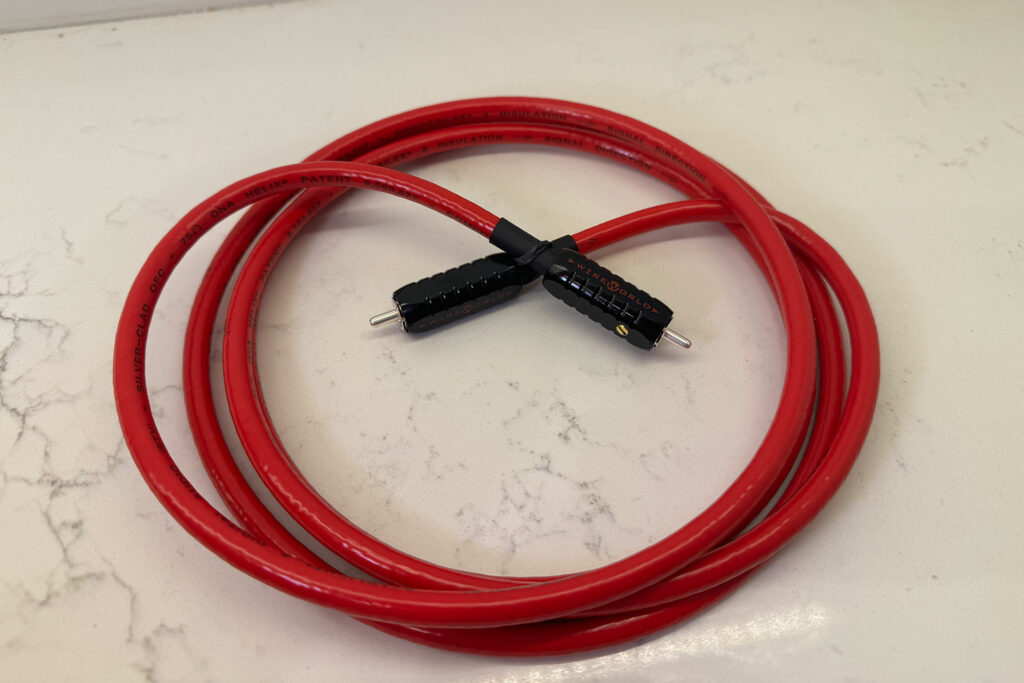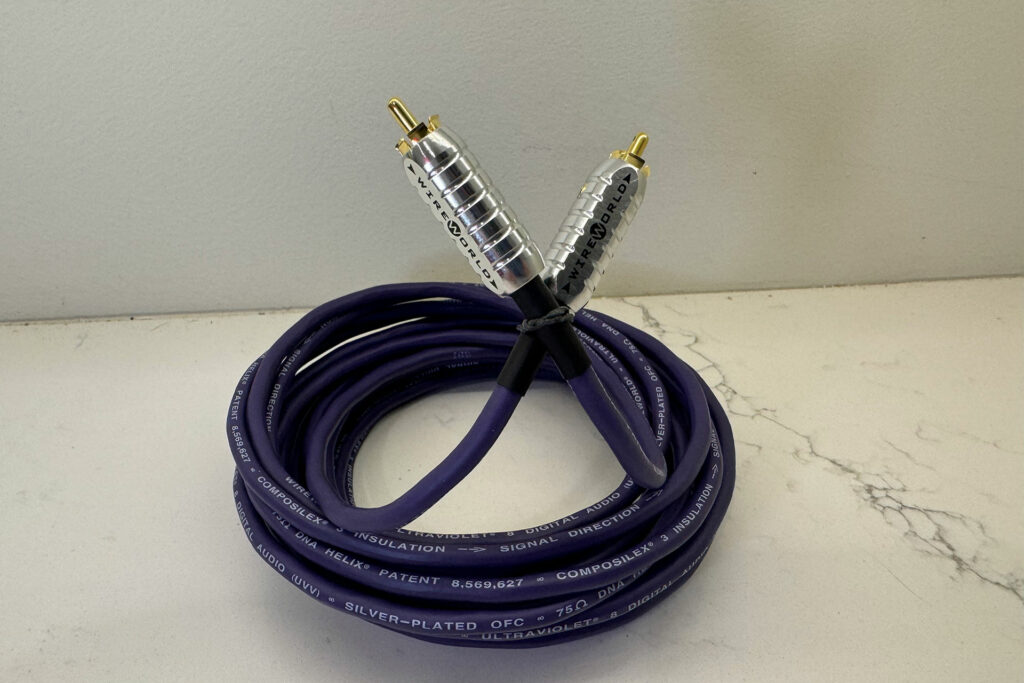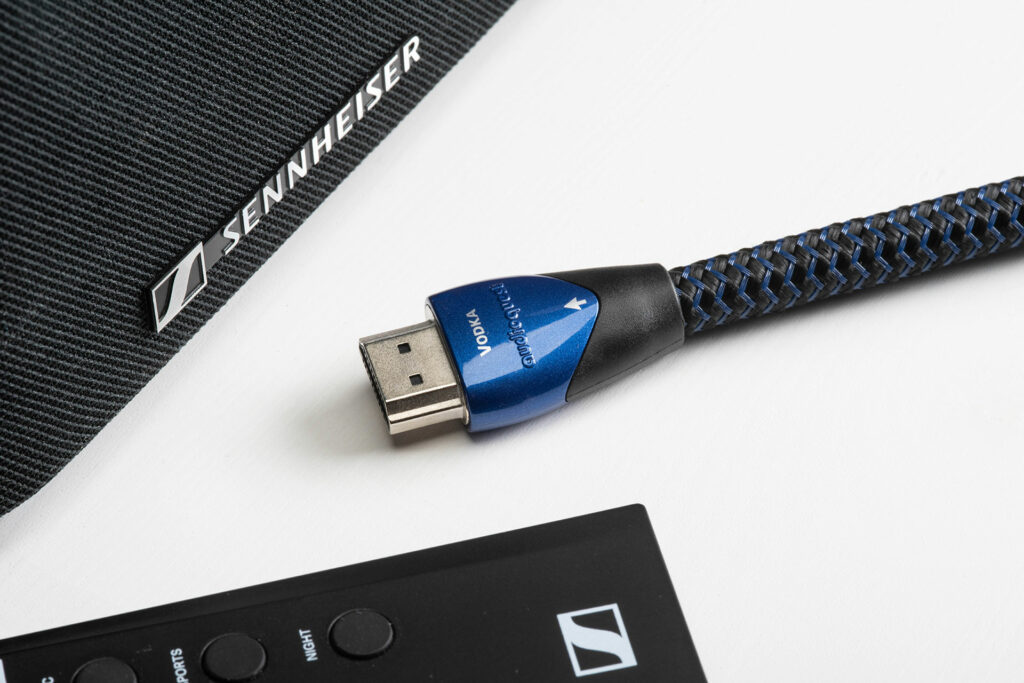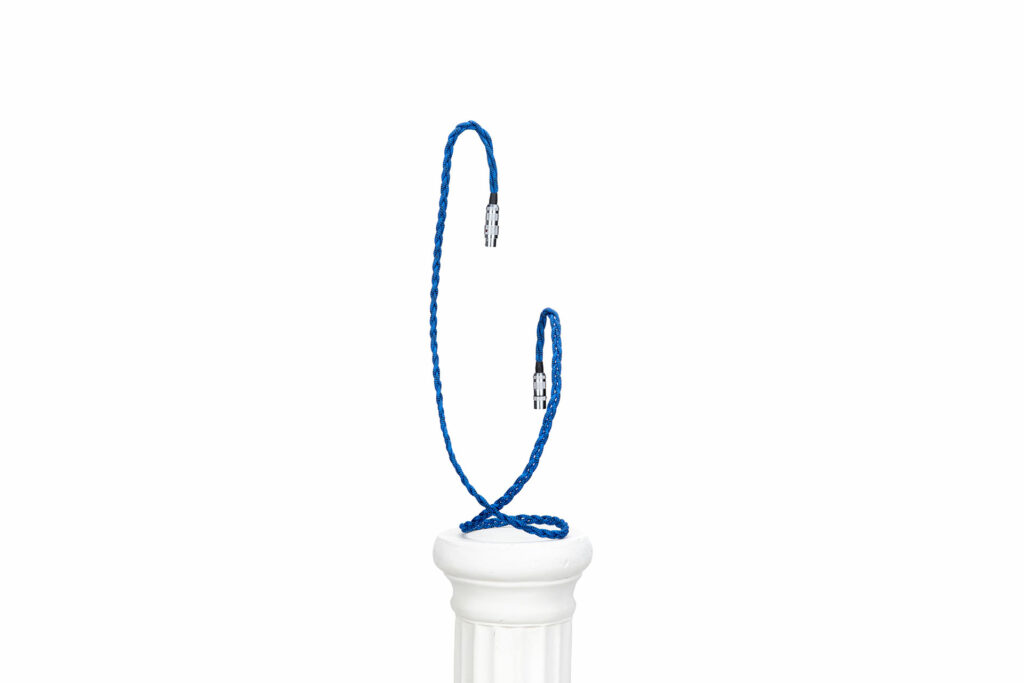Putting aside the huge percentage (year to year) gains in sales that vinyl enjoyed during the pandemic, we really live a digital world when it comes to audio, and that world is almost all streaming as of 2024. Physical media made up about 8.8 percent of the record music sales in 2022, according to the RIAA. That number isn’t going to be getting bigger, just like you are unlikely to be getting an AOL disc in the mail to install their latest software any time soon. To be clear, for audiophiles, vinyl isn’t going to go away any time soon, but it is a relatively small part of the overall music business, whereas digital streaming is huge. The question for many audiophiles isn’t if they want to go digital, but more, what’s the best way to do it?
One place that has a lot of audiophile ambiguity is what digital cable to use to connect your most important components. Some audio enthusiasts are forced to used certain connections, while others have all of the possibilities for digital connections open to them. What digital cable will you use to connect your best audiophile sources? The answer isn’t very obvious, but we are here to give you the information that you need to make a smart and great-sounding decision.

What Digital Cables COULD You Use?
Audiophiles have many options as how to connect their digital sources, via all sorts of different connections. They range from more pro connections, like the 110-ohm AES-EBU, and get into more consumer options, like SPIDIF (COAX, Optical and TOSLINK) at 75-ohm impedances. There are also USB cables, which are a favorite in the world of computer audio.
For some of us, the decision is made when we only have one or two options on our gear. For others, there are more options. Which one do you choose? That’s up to you, and likely requires a little bit of testing, but that’s part of the fun of the hobby.
Ethernet (Don’t Ignore Your Ethernet Cable)
Before we get into traditional digital cables, let’s talk a little about Ethernet. Physical connections are always better than wireless, no matter how convenient wireless connections are these days in our tech-laden lives. Your streamer/music server likely is connected to a network drive, and physically connecting it to your streamer is a great way to go. The same goes for your router. Where problems arise is that standard Ethernet cables tend to be treated like HDMI cables (meaning that they are all the same), but they are not. They tend to act as antennae that can attract noise and distortion, which is nothing but a bad thing and the opposite of our stated goal.
David Salz, the founder and head engineer at Wireworld, says, “It is easy to think that a functioning digital cable delivers perfect Zeros and Ones, but that’s almost always not the case.” This point is relevant to all digital cables, but Ethernet is the best example of this point. You could test the effect of an Ethernet cable with a simple SSD (solid state drive) thumb drive. You can put the same ripped (hopefully HD) file on your network drive, as well as on an SSD thumb drive plugged directly into the streamer. The thumb drive provides a reference for sound quality because it avoids the noise and losses of the network connection. The file played from the direct-connected thumb drive will usually preserve quieter musical information and sound more natural than playing the same file from the network server. If no difference is heard, then there is no reason to buy an upgrade Ethernet cable, however, that result is unusual and better cables can provide network sound that is closer to the local SSD reference. With a better cable, the same sonic improvements will be heard with music streamed over the Internet.
Moving a digital signal from a traditional digital audio component, like a CD transport, is done using the TCP-IP protocol, which has actual error correction that replaces missing digital information. That’s a pretty a good thing, and why some feel that saved/ripped files are best. You save a file – you get the file and, thanks to data correction, you get pretty much what you ripped. Streaming is different. Streaming music into your system over Ethernet is very different than saving a music file from one drive to another. Saving files only works perfectly because the error correction system resends missing data until the file is complete. Music streaming happens in real time without an error correction system, so missing data is lost.
You don’t have to spend a fortune on an Ethernet cable, but you couldn’t just try to avoid using any freebie, crap-tastic one that falls out of your cable storage bin or comes as a throw-in on other tech components. Getting a well-shielded yet suitably flexible Ethernet cable (or two) is an affordable and meaningful way to keep digital noise out of your audiophile digital front end. There’s more technology that goes into a good digital cable, but you get the point. More data is a good thing. Less noise is, too – and you can hear the difference, even from unexpected places like an Ethernet cable.
AES-EBU
This is the professional connection that most studios use for a number of good reasons. An AES-EBU cable looks like a single XLR cable, but it is different, although it also has a common mode noise reduction, which can be very effective and sonically positive. AES stands for the Audio Engineering Society, and they are the main group that set standards for the pro audio world. For practical reasons, these connections will work over a standard 80-ohm mic cable or a 110-ohm digital cable, which is the standard and reportedly the best-performing option. The 110-ohm balanced digital cable is said to be best for performance, because you have less reflected energy (less noise), which is better. But with that said, the cables work one way or another.
AES-EBU cables have no error correction, as none of the digital cable formats have error correction. So, what does that mean to you? Even if you have error correction in your CD transport, you still have to deal with it getting from your “disc spinner” to your DAC. If you have an analog output from your CD player, then this digital connection conversation is moot, but if you are using a PREAMP/DAC or a standalone DAC, then how that digital signal gets from the transport to the DAC is still very much a place where data can be lost or noise could be introduced.
Professional digital audio applications use “clock cables” to deal with issues relating to reducing or removing timing errors. Basically, it turns out that we were sold bill of goods in 1983 with “perfect sound forever.” Implemented effectively, timing issues being corrected can help provide a more accurate reproduction of the source component.
Being robust and backwards compatibility went into the AES’ decision to make such a cable from day one. Making it compatible with an XLR connector has its benefits, even if it isn’t fully optimal. There is no guarantee that a 75-ohm BNC COAX cable isn’t going to sound better, but the first option that one should look for is an AES-EBU. But always, always, always trust your ears, as there are no one best cable for your digital rig. Any good dealer or catalog store will let you try more than one cable (same length – but less is more in terms of performance versus length), and that is a worthy test for any audiophile looking for the best overall performance.

S/PDIF Options
Sony and Philips made untold billions of dollars on the Compact Disc, and S/PDIF was their connection that covers other digital cable names that you will hear mentioned in reviews or at the stereo store, including COAX, TOSLINK, and so on. Designed by Toshiba years ago, TOSLINK cables can be really good, because the best ones on the market today are made of glass, as they are fiber optic. When thin enough, glass becomes flexible, just so you know. The performance advantage of glass or optical cables is that they can transmit audio over an affordable, flexible cable via a red LED. This wasn’t always the case over audio’s history, but in the modern era, audio components are better in terms of accepting more accurate S/PDIF signals. Audiophile cable companies are making much more efficient and low-noise S/PDIF cables that are quite affordable and often very good. Don’t discount the various S/PDIF options as a viable high-end connection. In some cases, this is the only (or one of the few) option that an audiophile has.
S/PDIF cables were not popular in the custom installation market as well as with some audiophiles, but today, enough has changed that they are a worthy and affordable option.
COAX digital cables are also 75-ohm cables, which are terminated differently than glass cables. COAX digital cables are terminated with a familiar-looking RCA connector or a more high-end (pro) twist-lock BNC connector. They can be excellent digital connections (especially with a BNC connector). The aforementioned pro audio “clock cables” are also 75-ohm cables and come with a BNC, and that is very much from the pro audio and recording world.
USB
Saving files on a computer has been a thing for years. Decades, really. In the old days, audio didn’t come out of your computer very well, as some computers needed an audio card to effectively output digital music to other sources, like a DAC, but that was a long time ago. Connecting the two worlds of computers and audio brings us to USB cables as an option. There are three standard types of connectors: USB-A, USB-B and USB-C. The USB-B 2.0 connector is from the world of computer printers and, somehow, audiophile DACs tend to accept USB-B inputs. Nearly all sources, be they computers or devices like a tablet or a smartphone, likely have USB-A or USB-C (like on a modern iPhone) output options. So, if you wanted to connect a modern iPhone to a DAC with a wire, you might use a USB-C (from the iPhone) to USB-B (into your DAC) cable. If you had a more traditional component, like a streamer, you might use a USB-A output to a USB-B connector on the other side of the cable to make that connection.
“USB isn’t easy to make work right, but it is definitely possible,” says Wireworld’s David Salz. Solving noise issues well outside the normal world of cable engineering was part of the solution. Reducing noise and reducing interaction issues with the products is a basic outline of how USB works and can work well.
USB cables are not created the same, and a modest investment of roughly $100 cables gets you a potential, real-world and not-small upgrade that is well worth your consideration. For a lot of people, especially in the world of computer audio, USB is the only option. USB cables can have their issues, but they can be solved. Do the Pepsi Challenge for yourself in your own system to find the best, most error-free, low-noise solution. You will be able to hear the difference between the cables in most cases.

I2S Connection
This is the wild, wild west of digital cables, and it is not a widely-used standard, but it is still worthy of mention. Companies like PS Audio are using a traditional, new-school HDMI cable to transmit digital signal from a transport to a DAC, which provides a balanced connection and a clock signal, which is cool. The problem is that few companies are using I2S (pronounced “Eye Squared S”), and the ones that are aren’t following a standard or protocol, because there just isn’t one. Connecting different brands of gear with I2S via standard HDMI cables can often lead to incompatible results, even with correct connection, as the way that HDMI is configured by the audio manufacturer is often specific to their brand, as best we can tell. The pin connections can be configured specifically for each brand, so connecting, say, a PS Audio AIRLENS with somebody else’s DAC may or may not work. It is hard to tell at the beginning, but you now know why.

Final Thoughts on What Digital Cable to Use…
For me, the AES-EBU cable is where I start for high end audiophile applications when I am thinking about digital connections. There are real-world reasons for why these XLR-type digital connections are so good, but they aren’t the be-all, end-all in every application. Other digital cables get a bad reputation for all sorts of crazy reasons, but for our applications, don’t discount S/PDIF options or even USB, in that they can also be excellent performers in the right situation.
Audiophiles buy their audio gear in varied locations. Some have a good, local dealer. Others buy online from places like Monoprice.com or Amazon (which makes their own cables). Catalog stores (think: Crutchfield) are a good option, too, as they stock nearly every cable known to man for your testing purposes, and have a liberal return policy, which you will almost assuredly use if you are testing cables at home. The same return policy issues are found at Best Buy, and most of us have one of those somewhat nearby, which can be a good venue to try some new digital cables. You likely should try a number of digital cables to hear how your system works best. Keeping the cable lengths the same makes for a better test, and shorter (but not too short) tends to be better, but that’s not a hard and fast rule. Again, I like AES-EBU cables for a number of reasons, but not all components have such connections. For other audiophile system configurations, you might be more limited with your options, but don’t fret, because you can make any of them work for you, and no, you don’t have spend a fortune on digital cables. $100 isn’t a crazy amount to spend (roughly speaking) to get a well-made, well-engineered cable, and that might just be worth trying out in your system to see if you can eke a little bit more performance from your rig.
What digital cable format do you use on your best audiophile source? Why? Share with us your configuration in our moderated comments below. We want to hear how you do things in your system.




Some manufacturers prefer or specialize in one connection over another, I’ve seen owner’s manual suggest which connection might sound best.
I’m currently limited to USB due to my streamer. From my understanding some digital connections are limited in bandwidth, a mention of those parameters would have been nice. Good article and thanks for taking on what is often a controversial topic.
I do use a high quality USB cable and I could hear the difference in my system, simply huge over a standard USB. I also upgraded my Ethernet cable from router to streamer which was a nice improvement I wasn’t expecting.
I have two DACs that only play native DSD over USB and two native DSD streamers that only output USB.
If you have files with greater resolution than 24-192, your choice is limited to USB and, if you can get it to work when “available,” I2S.
In my systems, the only real digital cable choice is between USB brands.
With what combination of audio components would you connect an Ethernet cable (e.g. a Cat5/5e/6 cable with RJ-45 connectors) and NOT have TCP/IP involved?
Excellent article. The only connection the Oppo BDP 105 and Ayre Codex DAC have share is toslink. I tried inexpensive ones before investing in the DH Labs Glass Master toslink cable. It plays 24/192 with ease. It is much more detailed than a generic plastic cable.
Bought an Aurender N200 server/streamer 4 months ago. It offers USB and spdif. Aurender recommends USB. Luckily, that also available on the Ayre DAC. The Aurender supplied USB cable is very detailed but a little lean on vocals for my taste. A Supra 2.0 cable fixed that.
Also bought a Supra Ethernet 8 cable for streaming. Haven’t streamed Tidal or Qobuz yet. Still learning the Aurender and tweaking the system. The Aurender sounds incredible and has done a great job of not acting like a computer.
Thanks,
barondla